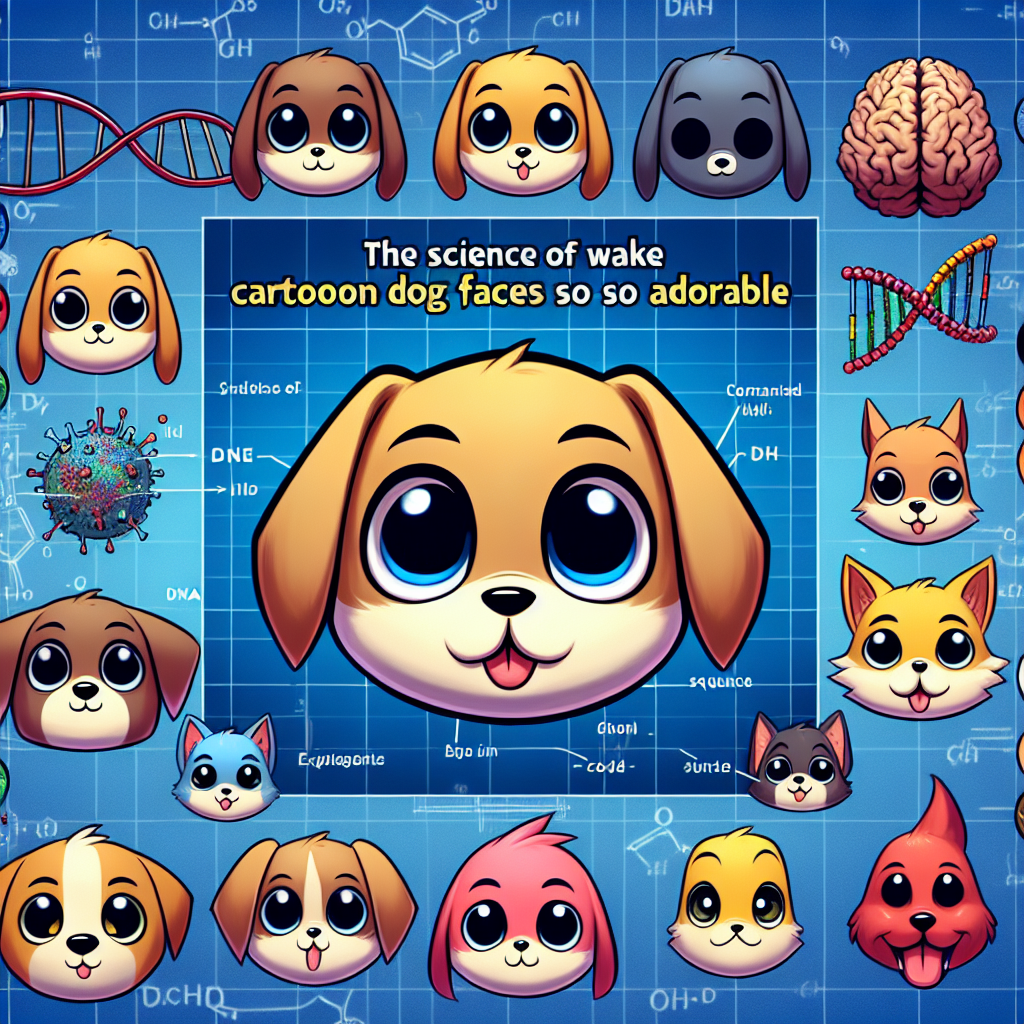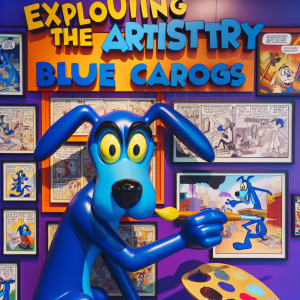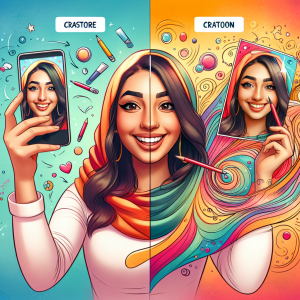Have you ever noticed how irresistibly cute cartoon dog faces can be? The big, expressive eyes, the floppy ears, the adorable little noses – it’s no wonder we can’t help but fall in love with them. But have you ever wondered why this is? What is it about these animated canines that makes them so undeniably adorable?
In this article, we will delve into the science behind what makes cartoon dog faces so adorable. From the anatomy of their features to the psychology behind our response to them, we will explore the various factors that contribute to their irresistible charm.
The Anatomy of Adorableness
It’s no secret that cartoon dog faces have some key features that make them undeniably cute. From their big, soulful eyes to their floppy, expressive ears, these features are not just the product of artistic license – they actually have a scientific basis.
One of the main reasons why cartoon dog faces are so adorable is their resemblance to human babies. Research has shown that babies’ faces trigger a powerful instinctual response in adults, causing us to feel protective and nurturing towards them. This phenomenon, known as “baby schema,” is characterized by features such as large eyes, a large forehead, and a small, round face – all of which are also present in cartoon dog faces.
In addition to their baby-like features, cartoon dog faces also exhibit a phenomenon known as neoteny, which refers to the retention of juvenile traits into adulthood. Just like puppies, cartoon dogs often have soft, rounded features, which can evoke feelings of warmth and affection in us.
The Power of Expression
Another factor that contributes to the cuteness of cartoon dog faces is their ability to convey a wide range of emotions through their expressions. From wide-eyed wonder to playful grins, these animated canines are masters of eliciting empathy and connection from their audience.
The expressive nature of cartoon dog faces can be attributed to their unique combination of features, such as their large, emotive eyes and their mobile, floppy ears. These features allow them to convey a wide range of emotions, making it easy for us to project our own feelings onto them.
Furthermore, research has shown that the emotional response we have to animated characters can be just as strong as our response to real-life beings. This phenomenon, known as anthropomorphism, allows us to anthropomorphize cartoon dog faces, attributing human-like emotions and intentions to them, further enhancing their appeal.
The Psychology of Cuteness
It’s not just the physical features of cartoon dog faces that make them so cute – there’s also a psychological component at play. The concept of cuteness has been the subject of extensive research, and scientists have identified several key factors that contribute to our perception of it.
One of these factors is symmetry, which refers to the balance and proportion of an object’s features. Cartoon dog faces often exhibit symmetrical features, such as evenly spaced eyes and a well-proportioned nose, which can trigger a positive response in us.
Another factor that contributes to the cuteness of cartoon dog faces is known as the “cuteness response,” which refers to the emotional reaction we have to adorable stimuli. When we encounter something cute, our brains release a surge of dopamine, a feel-good neurotransmitter that creates a sense of pleasure and satisfaction. This response is thought to be an evolutionary adaptation, as it encourages us to nurture and care for vulnerable, adorable creatures.
In addition to these factors, cultural and social influences also play a role in our perception of cuteness. For example, certain features that are considered cute in one culture may not have the same effect in another, reflecting the influence of societal norms and expectations.
FAQs
Q: Why do we find cartoon dog faces so adorable?
A: The adorableness of cartoon dog faces can be attributed to a combination of factors, including their resemblance to human babies, their neotenous features, their expressive nature, and the psychological concept of cuteness.
Q: Do real dogs exhibit the same features as cartoon dog faces?
A: While real dogs may not exhibit all of the same features as cartoon dog faces, many of them do possess traits that evoke a similar response in us, such as big, expressive eyes and floppy, emotive ears.
Q: Can the cuteness of cartoon dog faces have a positive impact on our mood?
A: Yes, research has shown that exposure to cute stimuli can have a positive effect on our mood, triggering the release of dopamine and creating a sense of pleasure and satisfaction.
Q: Is the concept of cuteness the same across different cultures?
A: The perception of cuteness can be influenced by cultural and social factors, so what is considered cute in one culture may not have the same effect in another. However, certain universal features, such as symmetry and neoteny, tend to evoke a positive response across cultures.
Q: Why do we feel a strong emotional connection to cartoon dog faces?
A: The emotional response we have to cartoon dog faces can be attributed to the phenomenon of anthropomorphism, which allows us to attribute human-like emotions and intentions to animated characters, creating a sense of empathy and connection.
In conclusion, the adorable nature of cartoon dog faces can be attributed to a combination of factors, including their resemblance to human babies, their expressive features, and the psychological concept of cuteness. Whether it’s their big, soulful eyes or their playful, emotive expressions, there’s no denying the undeniable charm of these animated canines. So the next time you find yourself swooning over a cute cartoon dog face, know that there’s a scientific basis for your adoration – and that’s something we can all smile about.








+ There are no comments
Add yours